The Architects That Built The Olympic City
Dragica and Zoran Doršner belong to a generation of post war Yugoslavia. They were architects that built the olympic city in Sarajevo for the XIV. Winter Olympic games 1984. During their forty years of practice they have created various projects, but mainly focused on residential social architecture.
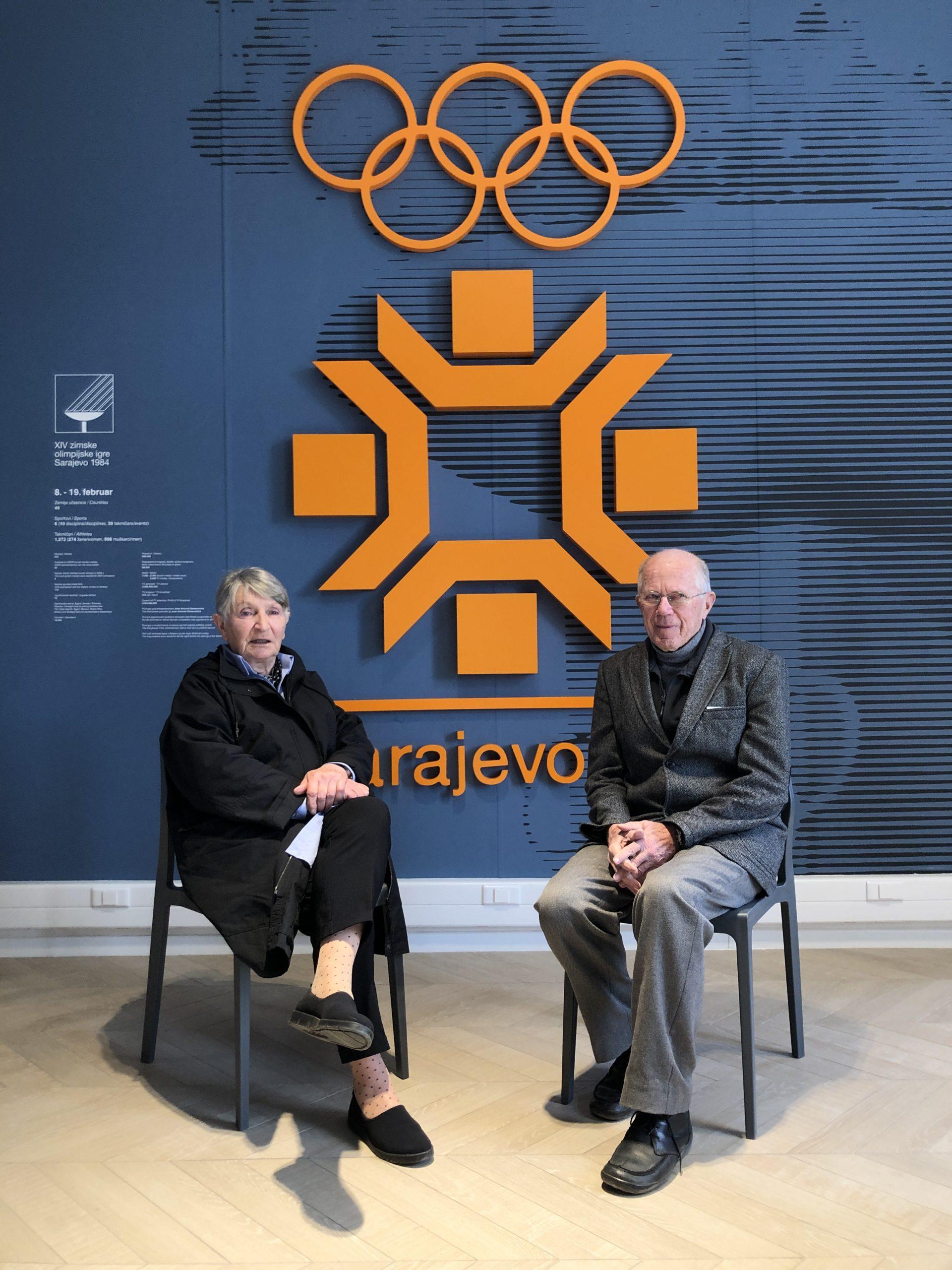
Dragica and Zoran Doršner. | Foto © Boris Trapara
After the end of WWII the University of Sarajevo started with the opening of their first faculties, among which was the Faculty of Architecture and Construction in which joined professors from other higher education centres in Yugoslavia. The admission of the first students began in 1954. As early as 1960, the first generation of architects, urban planners, structural engineers, traffic engineers and designers started to get involved in offices that were intensively opened.
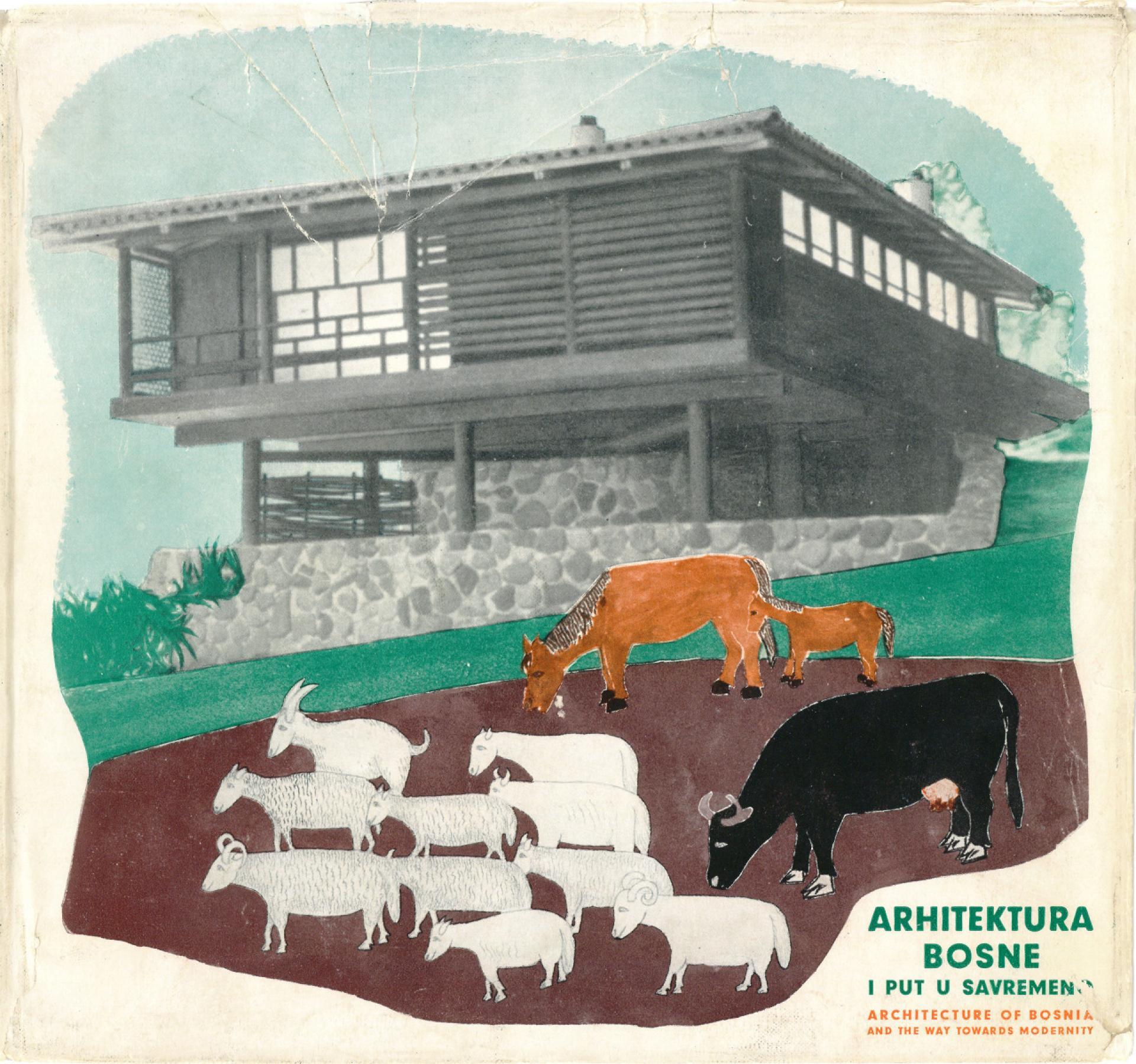
Cover of Architecture of Bosnia and the Way to Modernity by Dušan Grabrijan and Juraj Neidhardt (1957). | Collage, 14 x 14 9/16″ (36 x 37 cm). Private archive of Juraj Neidhardt
Dragica and Zoran enrolled almost among the first students in 1956 (and 1958) and graduated in 1962 (and 1964). Through the first professional engagements in the former Yugoslav design bureaus and companies, then designing in the housing construction of Sarajevo workers' settlements and the creation of the Spatial Plan for XIV ZOI Sarajevo in 1984, the Doršner couple actively participated in the post-war reconstruction of Sarajevo.
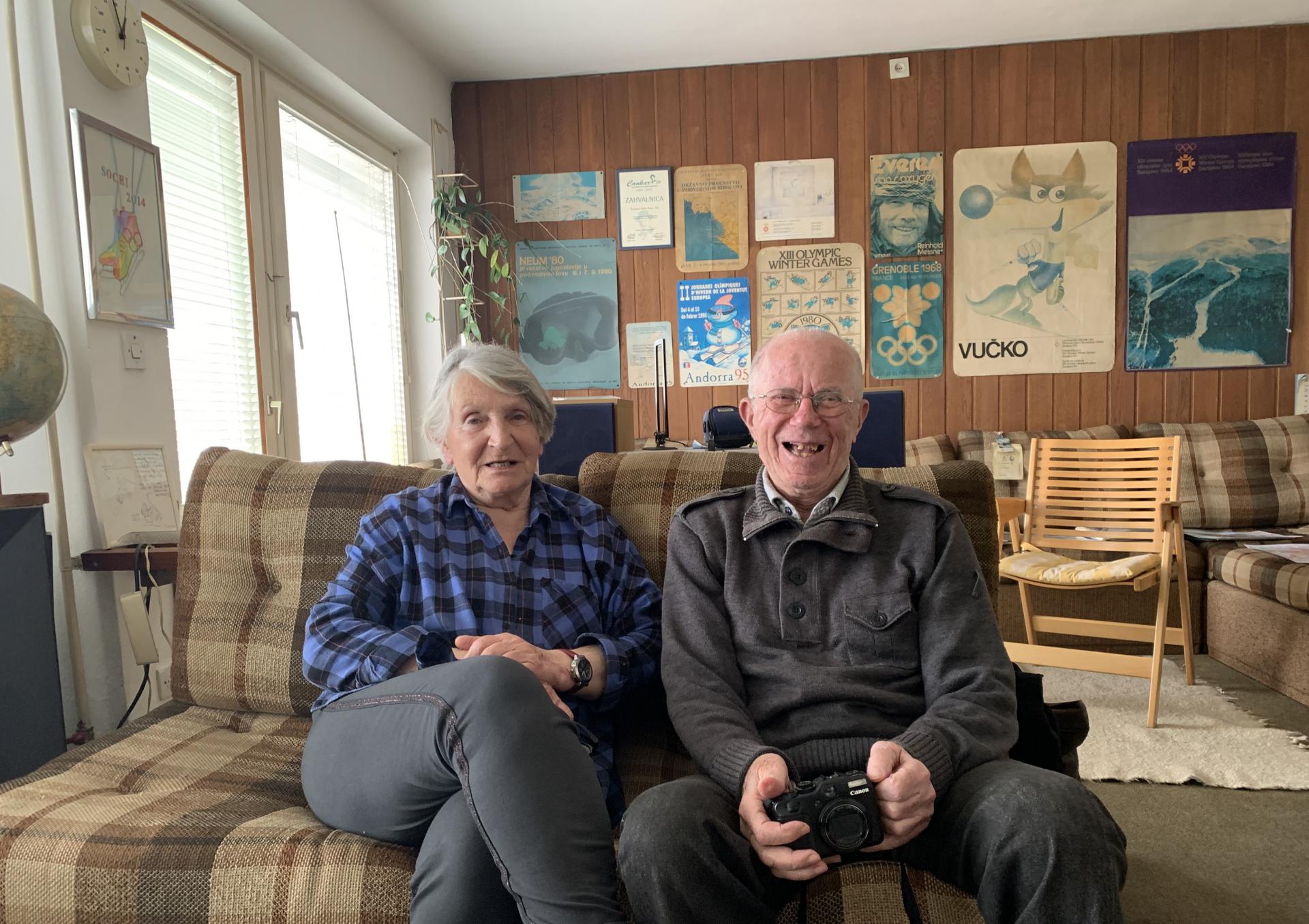
Dragica and Zoran Doršner in their home in Sarajevo. | Photo © Boštjan Bugarič
Their enrolment in the design of the intensive housing construction, which meant according to the five-year plans 10,000 new apartments every five years on the territory of the city of Sarajevo. It is worth emphasizing that the city of Sarajevo had 47,000 inhabitants in the first census after World War II in 1947.
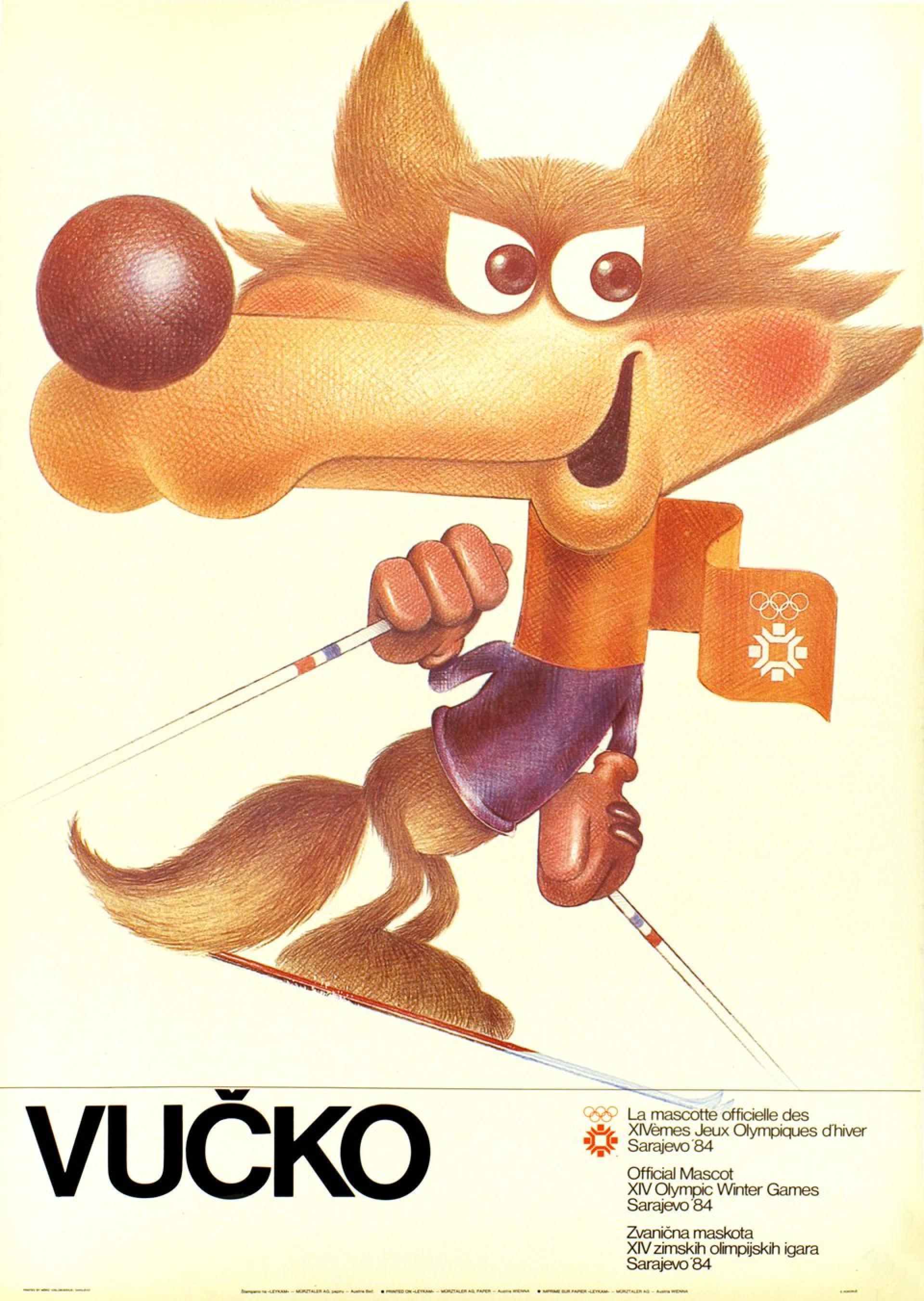
Vučko - the mascot of Sarajevo Winter Olympic Games in 1984
Their private and professional life is connected to the greatest extent to Sarajevo - the Olympic city, about whose indomitable spirit and specific architecture they speak with special emotions. After 47 years Sarajevo had 470,000 inhabitants, which means that after 47 years has ten times more inhabitants. A young generation is born, the city and surrounding settlements expanded. What is going on in Sarajevo today?
How did you plan the architecture of Sarajevo during the XIV Olympic Games?
Zoran Doršner: As an architect I had already designed and implemented accommodation facilities at the winter center Jahorina and participated in the organization of the international FIS alpine competition Zlata lisica, which was due to the lack of snow on Pohorje, Slovenija, twice held on Jahorina. The chief urban planner of the city of Sarajevo, architect Momir Hrisafovič, engaged me in the drawing of the Spatial plan for the XIV Olympic Games in 1984.
…so you visited many Olympic cities?
ZD: We promptly visited the Olympic cities of Innsbruck, Grenoble, Courchevel, Chamonix and Garmisch-Partenkirchen.
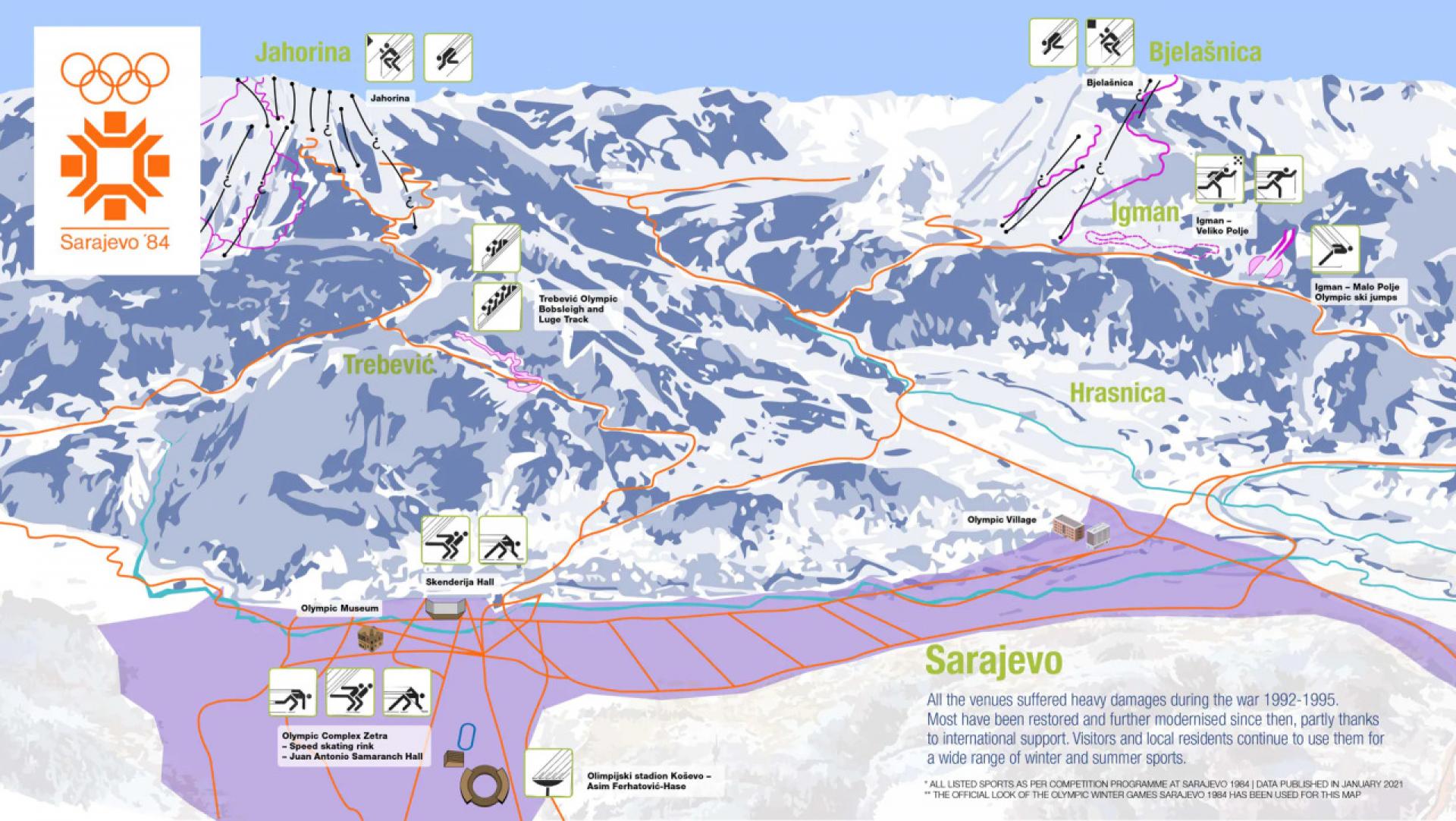
Sarajevo 1984 Olympic Venues
After cordial and well-intentioned discussions we received their planning documentation of the Olympic arenas and remembered their important advice: "Make sure that you design all sports facilities as rationally as the final day of the competition is the most important for you - because then everyday life continues as before the Winter Olympic Games."
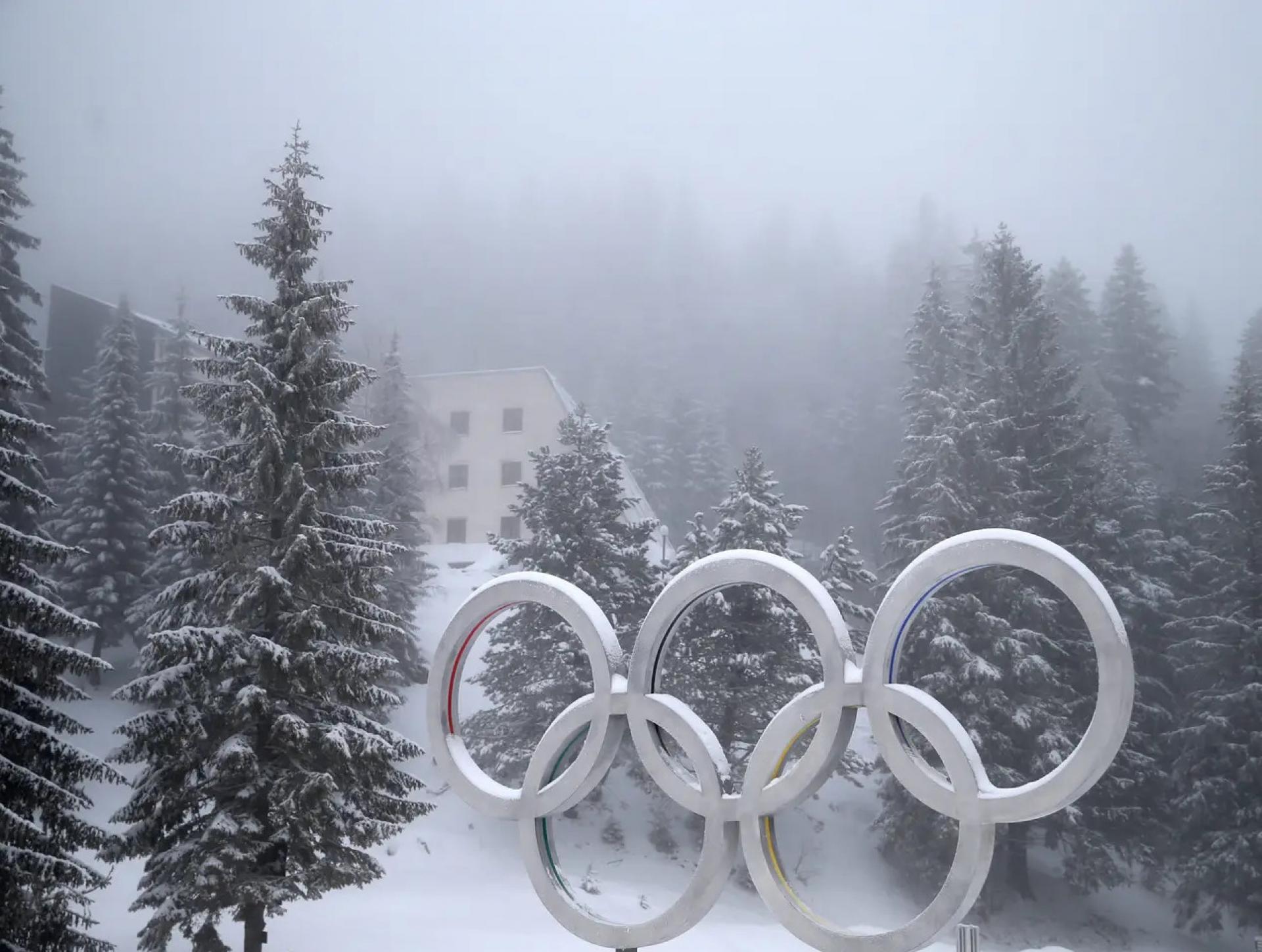
The Olympic rings as seen on the Jahorina Mountain near Sarajevo on February 5, 2019. | Photo © Dado Ruvić
What did the Sarajevo Winter Olympic Games change in the cultural context?
ZD: Before the Olympic Games girls in Sarajevo didn’t ski, there was no discussion about women in sport. There is a story about a courageous girl who changed into her brother's clothes so she could ski. At that time there was no institution in Sarajevo where women could be educated. A big impact had Adeline Paulina Irby (1831 – 1911), known as Miss Irby, who was a British travel writer and suffragist who founded an early girls' school in Sarajevo.
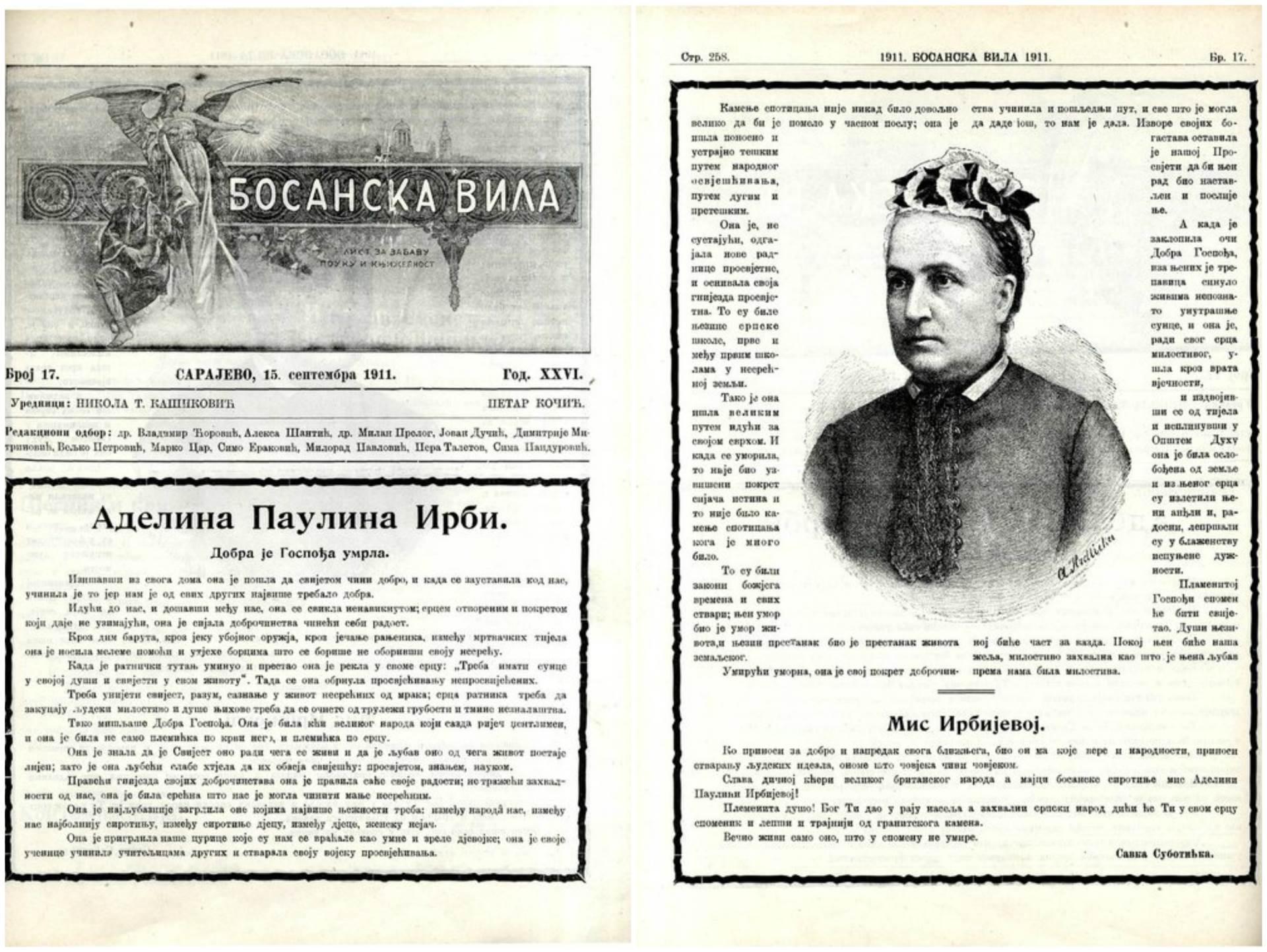
When Irby died in Sarajevo, leaving all her money to aid education in Bosnia, there was mourning in Belgrade as well as Sarajevo as 15,000 people irrespective of gender or faith were said to have paid their respects in a funeral that Bosnia had never saw.
A woman in Bosnia lived before that closed in the traditional house with a garden. A total isolation for women. Only after WWII Tito gave an order that women need to learn to read.
What was the situation at the time of Sarajevo's candidacy for XIV Winter Olympic Games in 1984?
ZD: It is worth reminding that on the eve of the International Olympic Committee Session, there was an international violation of the Olympic rules that all international conflicts should be suspended during the Olympic Games. Despite this, there was a boycott of the sports team of the USSR by not attending the Summer Olympics in Los Angeles and then a rematch was announced, a boycott of the USA team at the Summer Olympics in Moscow. Then the International Olympic Committee under the leadership Antonio Samaran considered to adopt the Candidature of the city of Sarajevo considering the role of Tito's Yugoslavia in the world movement of non-alignment and unanimously chose our candidacy in order to unblock the world Olympic tradition of peace and togetherness.
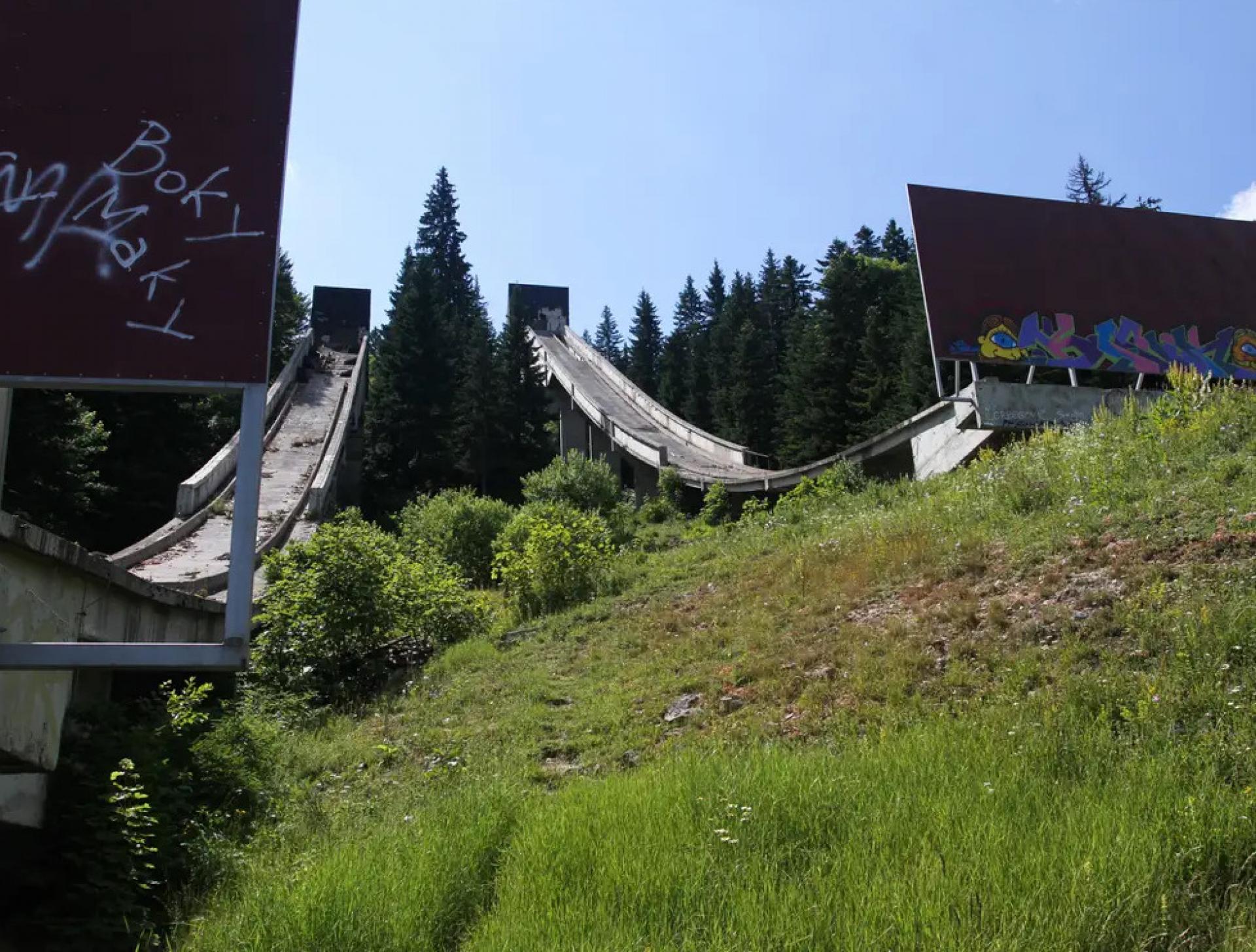
Abandoned Igman Olympic jumps in Sarajevo on July 14, 2015. | Photo © Jakub Porzycki
In the end, it is especially worth mentioning that high officials of the International Olympic Committee have on several occasions given a high rating to the organization of the Olympic Games in Sarajevo. An unforgettable anecdote was about how all Sarajevo collaborators in the organization responded when the Olympic officials asked them for any kind of intervention and it was always No problem.
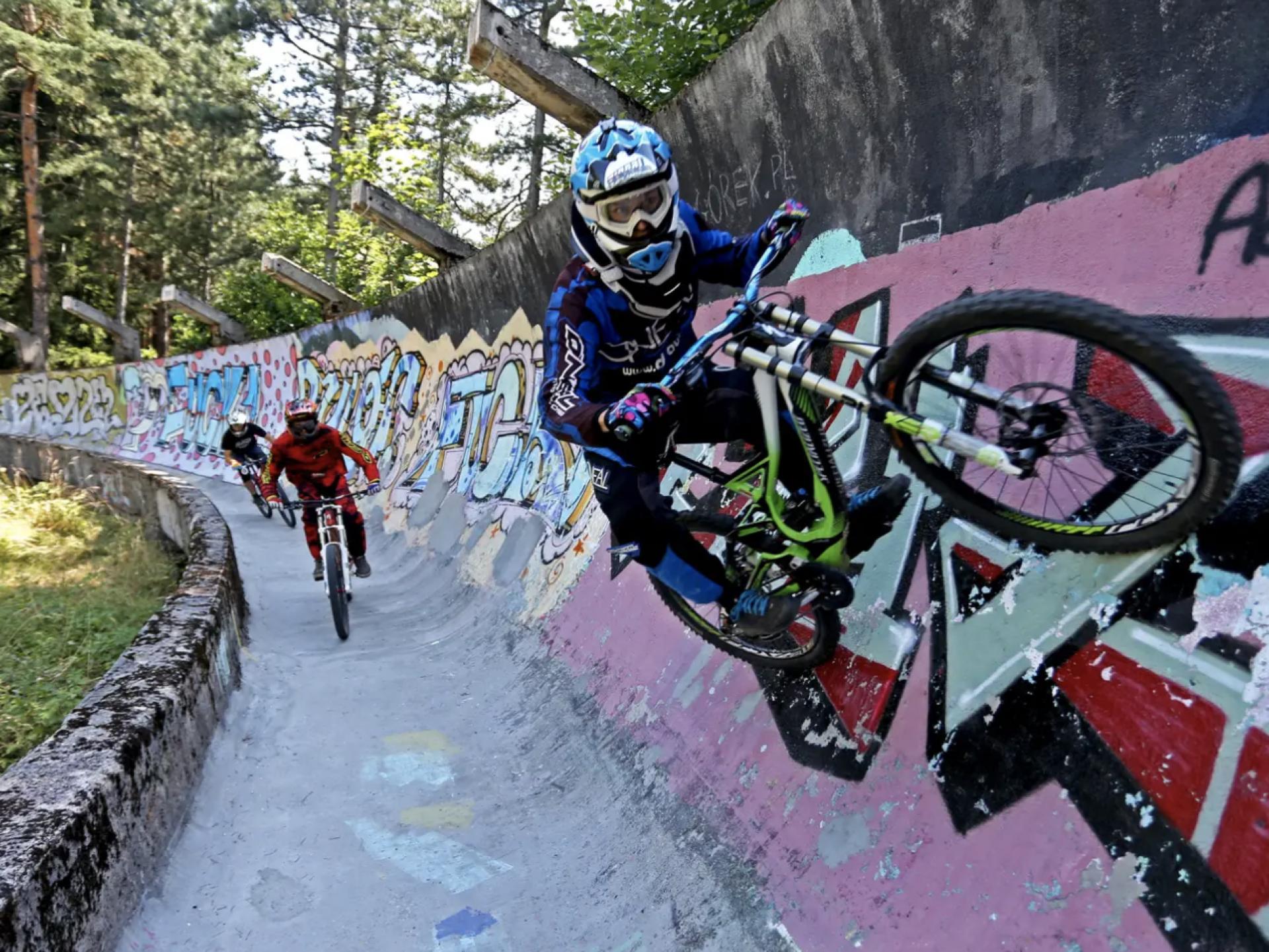
Downhill bikers train on the disused bobsled track from the 1984 Sarajevo Winter Olympics on Mt. Trebević near Sarajevo. | Photo © Dado Ruvić
The General Secretary Antonio Samaran publicly stated during the ceremonial extinguishing of the flame and the lowering of the Olympic flag at the Koševo stadium that the Sarajevo Olympic Games were the most successful of all previous games and said goodbye with the words Thank you dear Sarajevo and Goodbye to Calgary!
How about the atmosphere of the city, how did Sarajevo change since the 1980s?
Dragica Doršner: The city's youth in particular accepted the changes. In the winter, instead of heavy coats (until then there were no industrial ready-made clothes in stores) girls and boys began to dress sporty in windbreakers. Foreign languages were learned massively, bottles of Coca Cola were sold as a novelty at newly arrived kiosks.
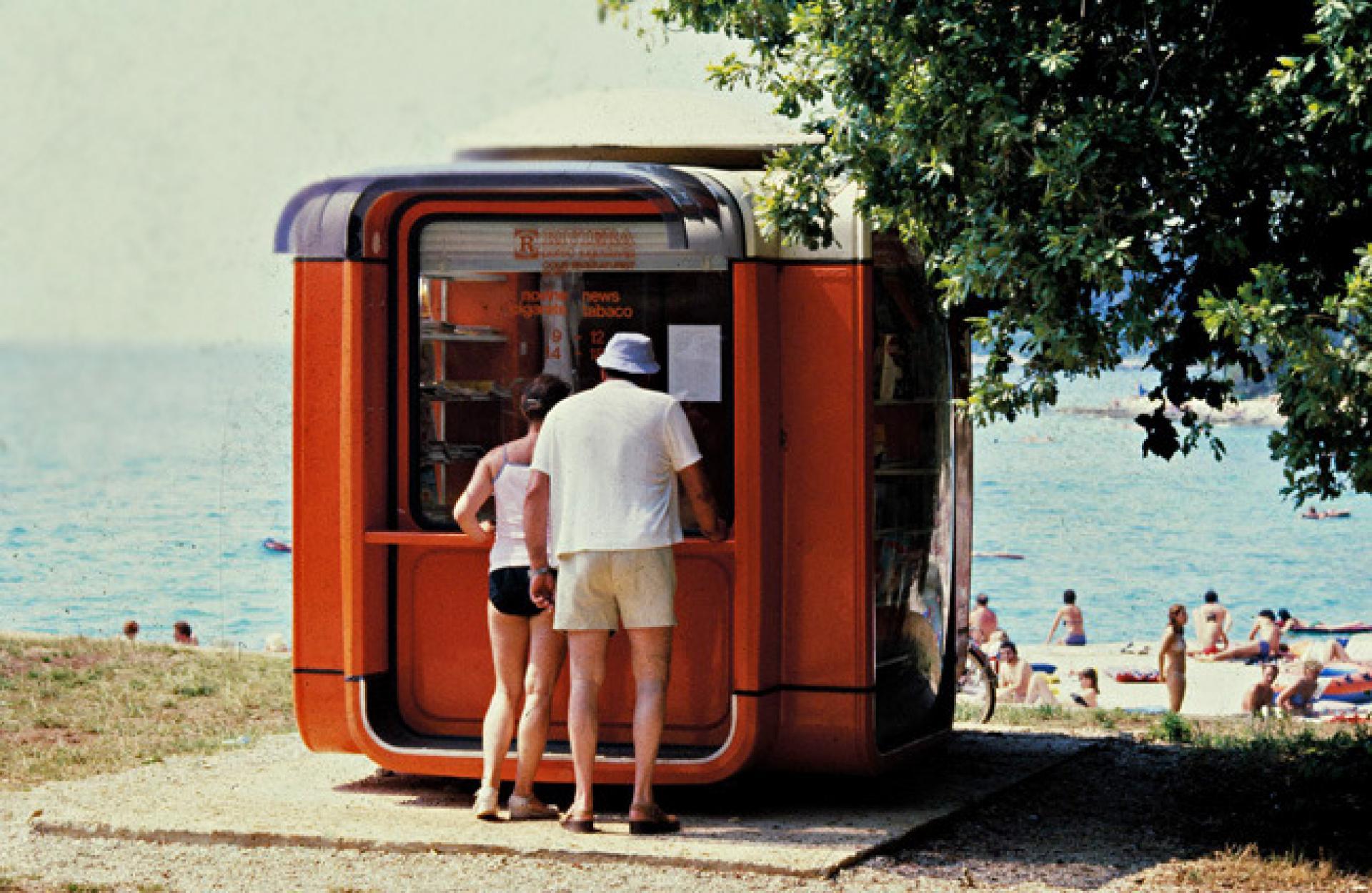
Kiosk K67 by Saša Mächtig was distributed wide across Yugoslavia; on the photo next to the seaside as a tobacco and newspaper stand. | Image © Museum of Architecture and Design MAO, Ljubljana K67
The famous hit of Bijelo Dugme, our leading singing band at the time, was "Let's go to the mountains because there is no winter there!". After Jure Franko's legendary winning of the Olympic silver medal in the VSL, Sarajevo's current saying remained "I love Jurek more than Burek!" (burek is a traditional favorite dish).
What about the 1990s?
ZD: This was a period where the aggressor didn’t skimp on ammo. In such a way an enormous Urbicide was committed. I took many photos of destroyed places and architecture of enormous value.
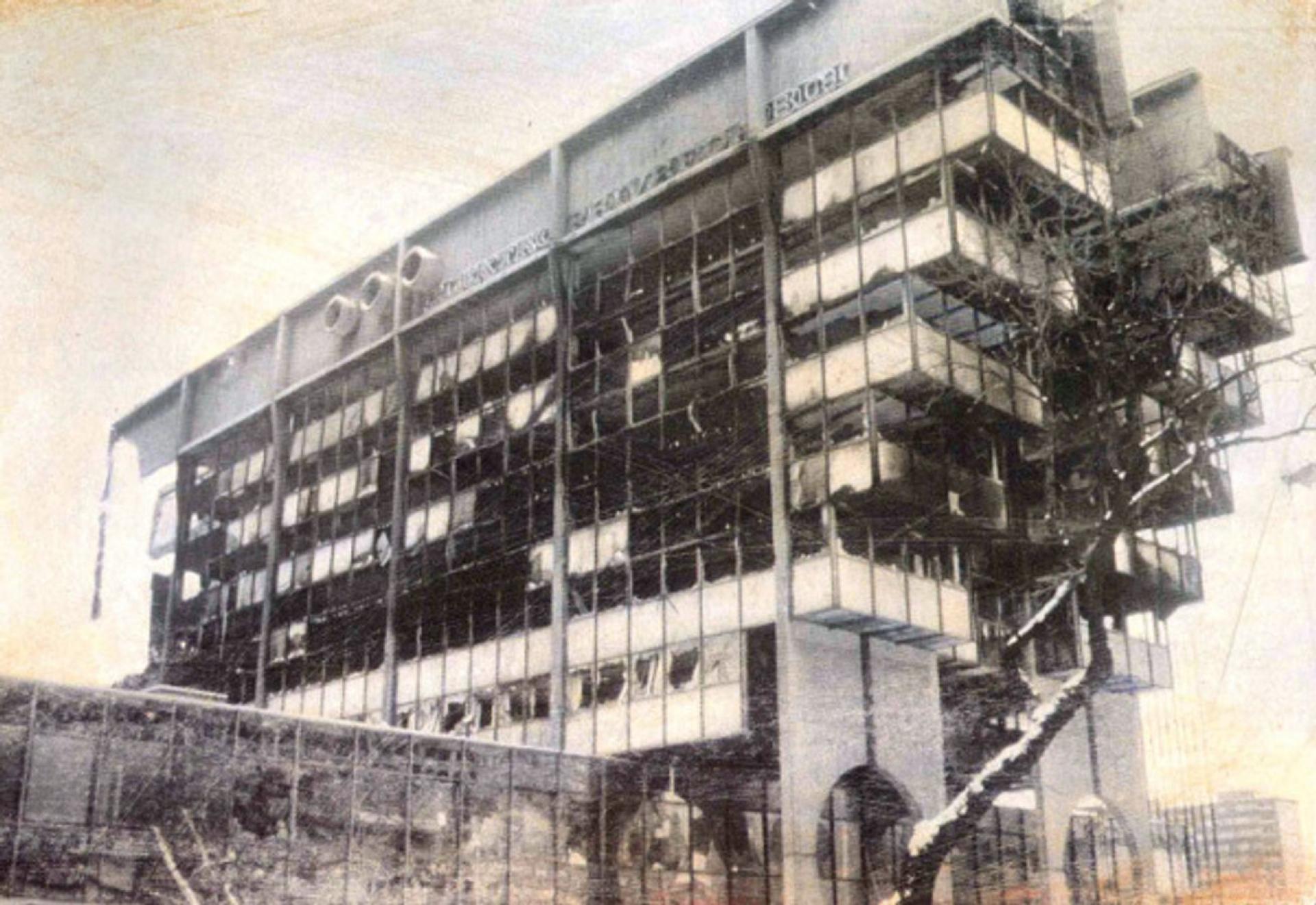
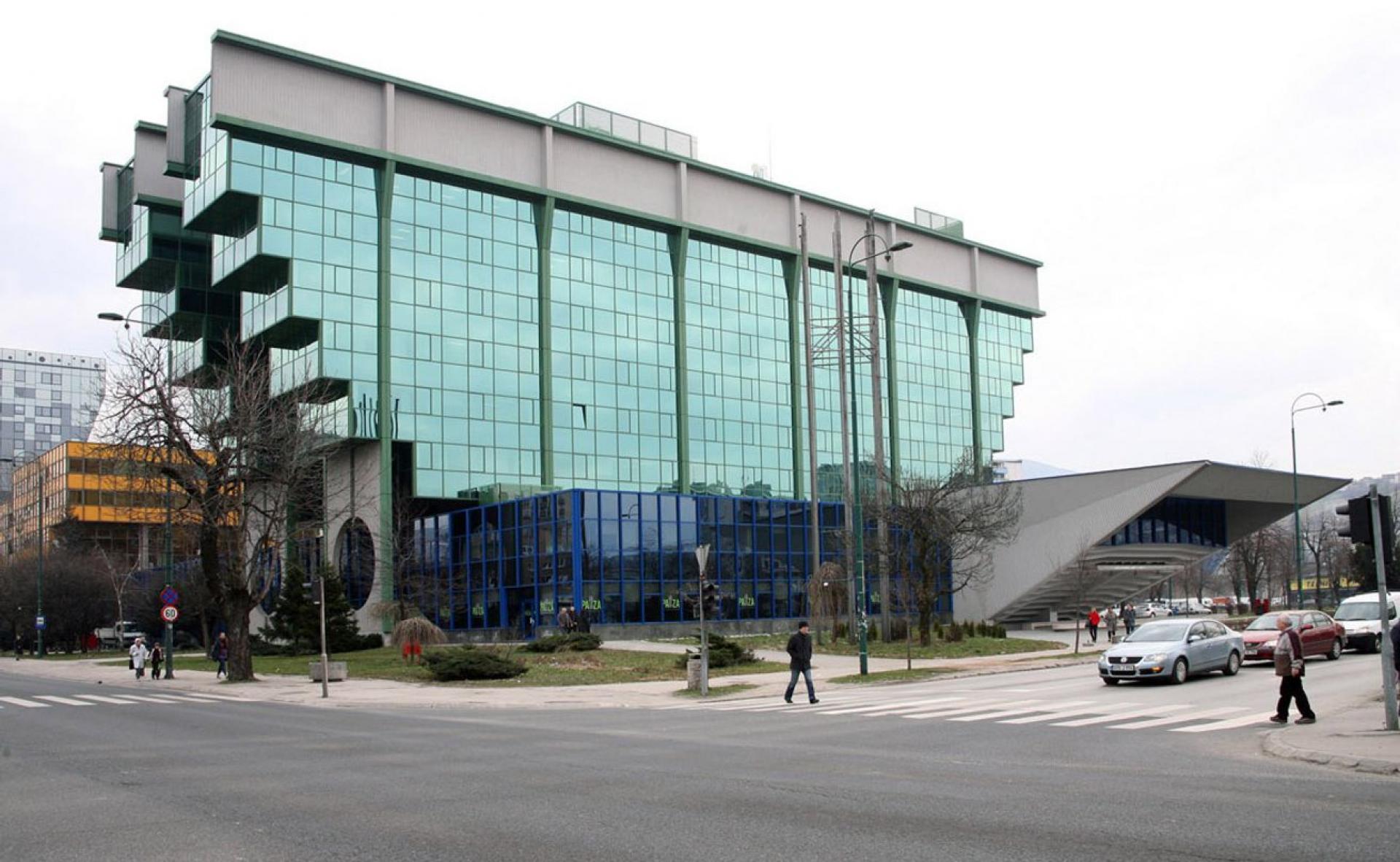
Elektroprivreda by Ivan Štraus served as the headquarters of the company for the power distribution of Bosnia and Herzegovina. | Photo © Zoran Kanlić
I still can’t believe the amount of hate, where the Ivan Štraus Elektroprivreda building or old Austro-Hungarian post office building and many others were destroyed.
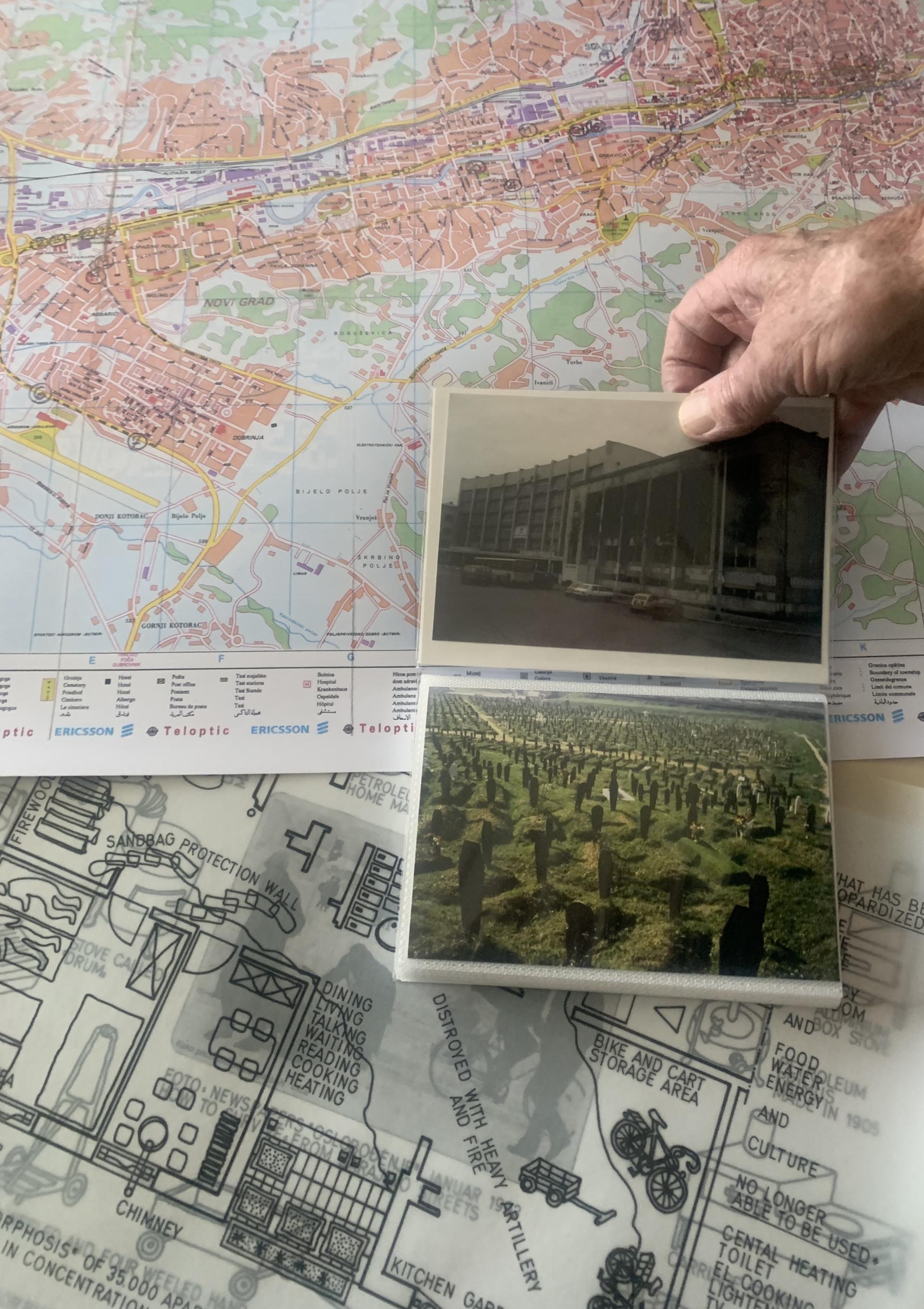
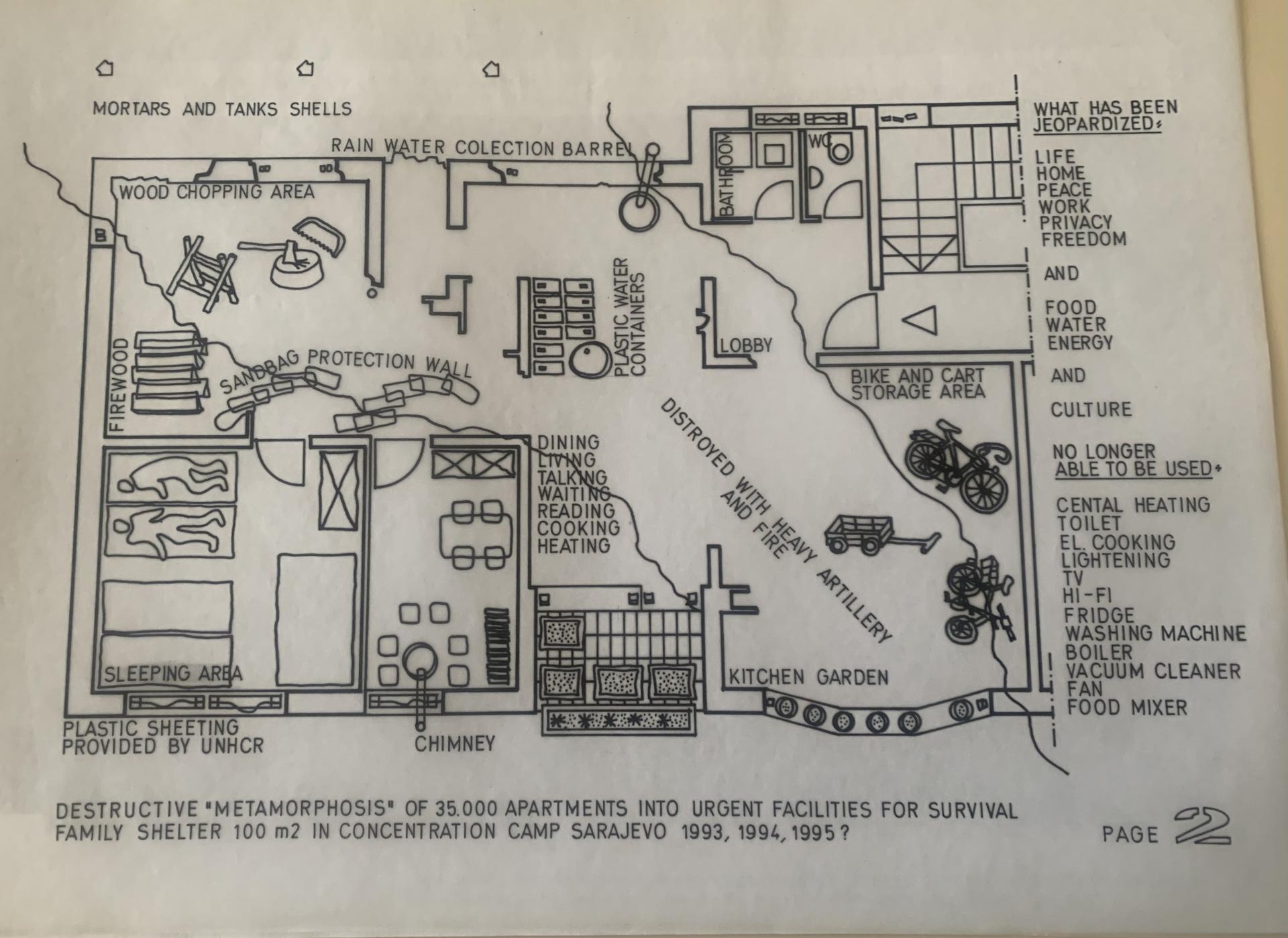
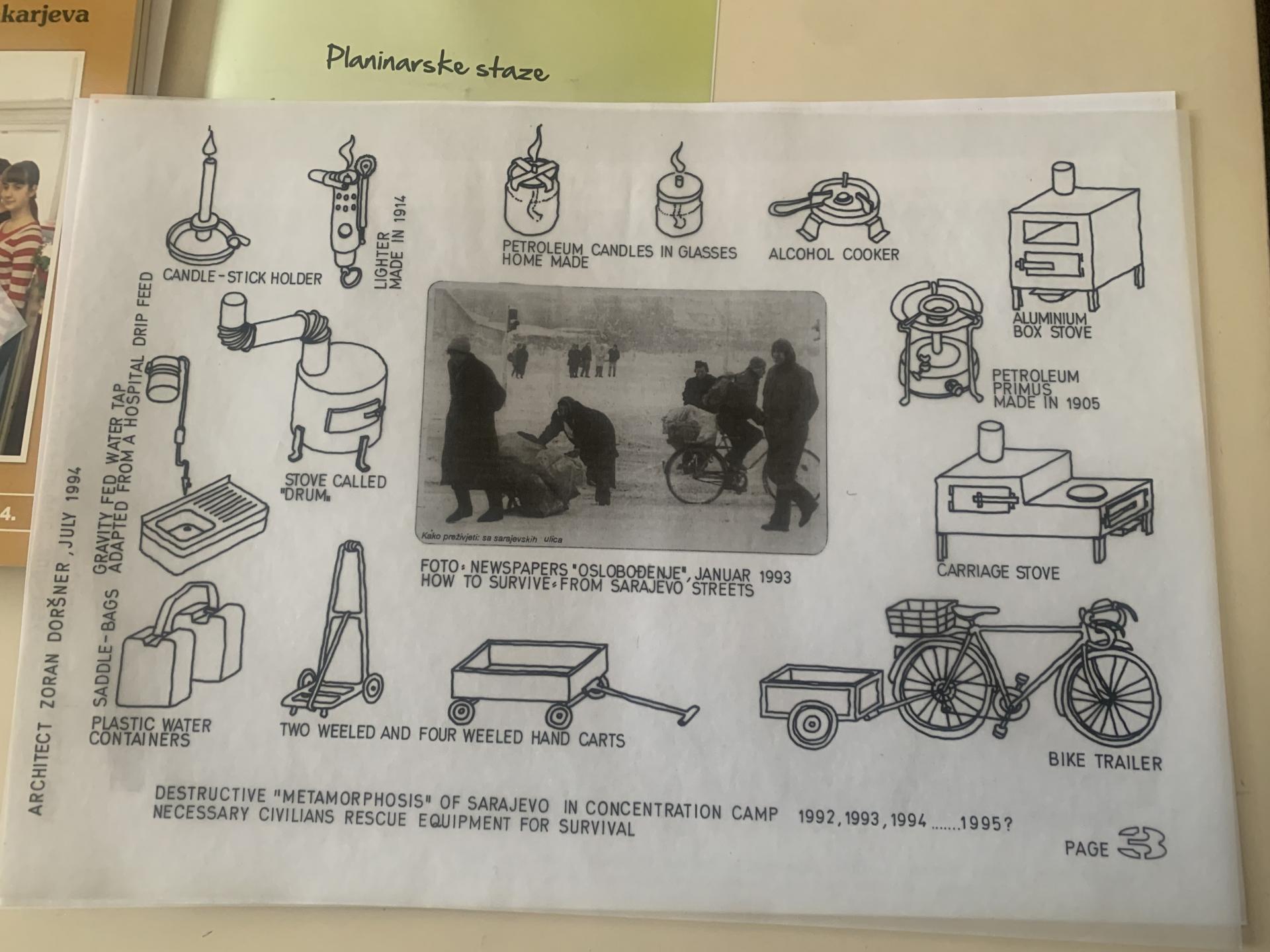
Doršner's Personal photo book of the Urbicid in Sarajevo and Destructive Metamorphosis plan for Sarajevo during the war in 1990s. | Photo © Boštjan Bugarič, Archive of Zoran Doršner
DD: There is always a lot of sarcasm in our culture, for example under a graffiti on the renovated Post office This is Serbia, another graffiti was written Idiot, this is the post.
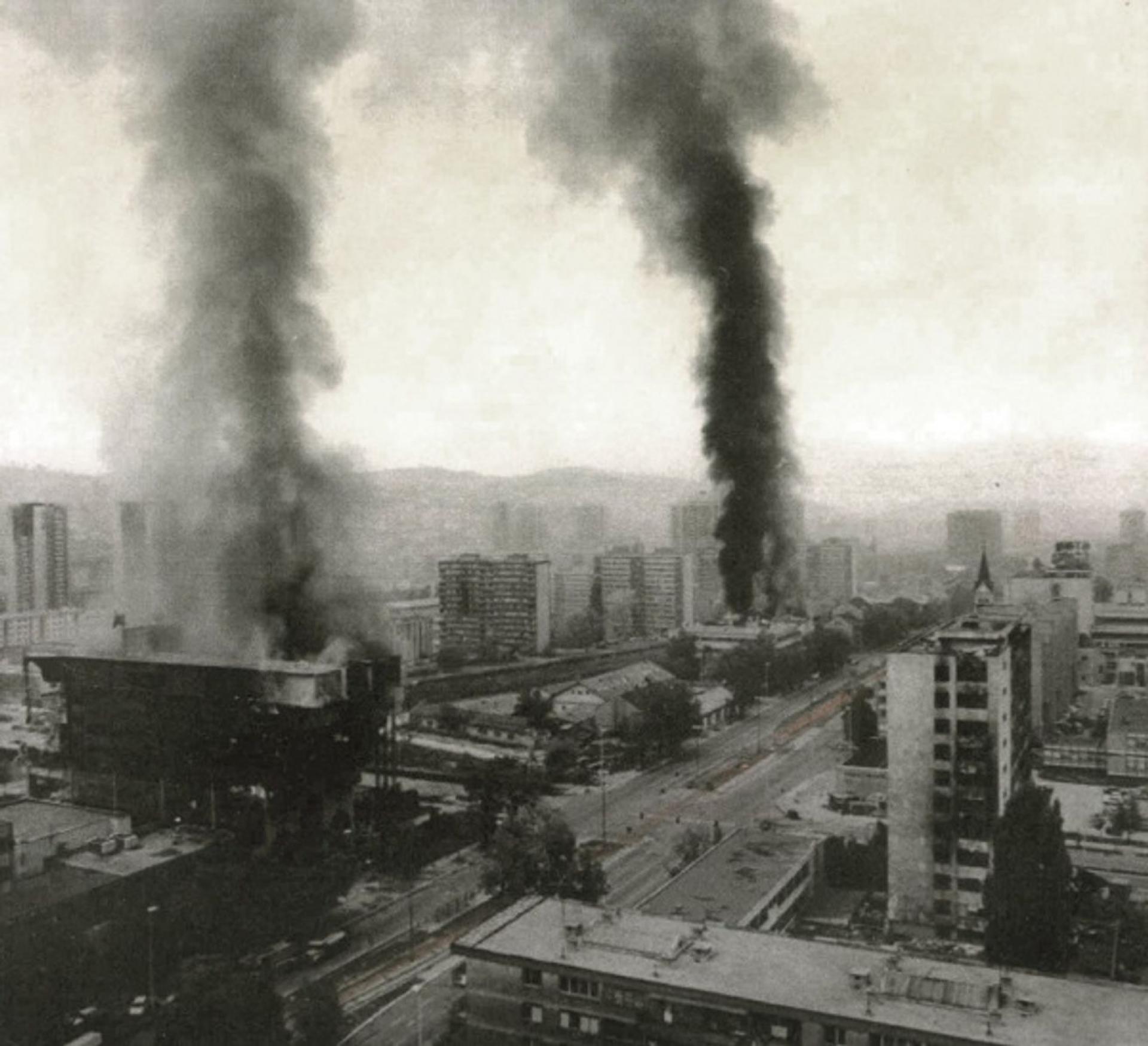
Elektroprivreda Building under siege in 1992. | Photo by Zoran Kanlić (1993-1994)
How did socialism and religion coincide?
ZD: It's a sensitive issue. Religion has been around since Alija Izebgović started to make propaganda. We were all atheists. An interesting metamorphosis happened when Tito died, the former party officials were sitting in the first row in the mosque. They turn as the wind blows.
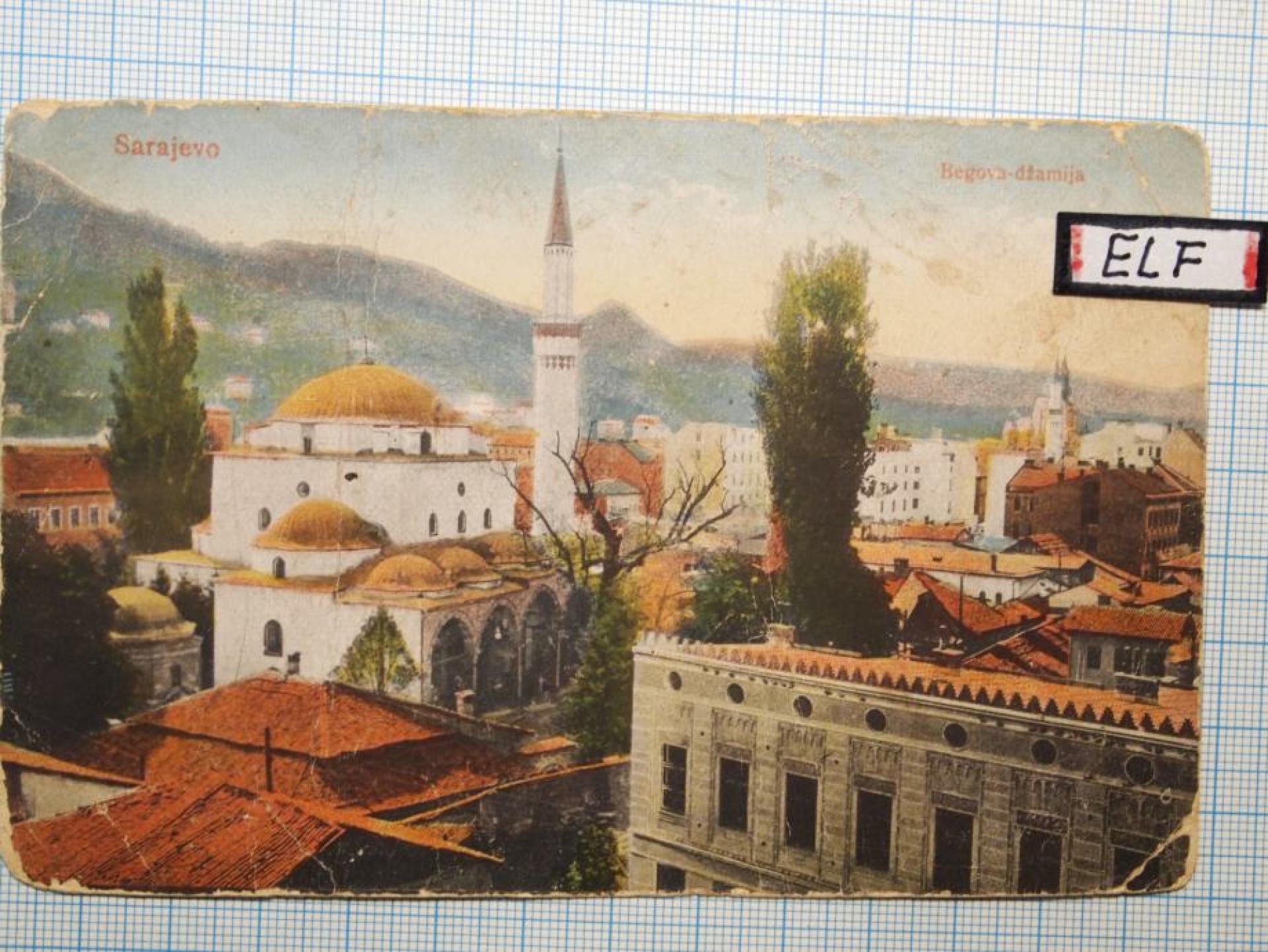
DD: During Yugoslavia, religion was not mentioned much, which was the position of the communists, not the communist party, and it was not forbidden to consume religion. Although it was not very obvious that many people go to church or mosque. With the first democratic elections in 1990, new parties with a national character appeared. That's when the major visit of mosques began.
Is there any European influence in today’s Sarajevo?
DD: Sarajevo lives in a very dynamic European rhythm with the vivid architecture of the first so-called oriental period, then comes the ambience from the period of Austro-Hungarian empire, followed by a shorter period of socialist realism, accompanied by modern and postmodern.
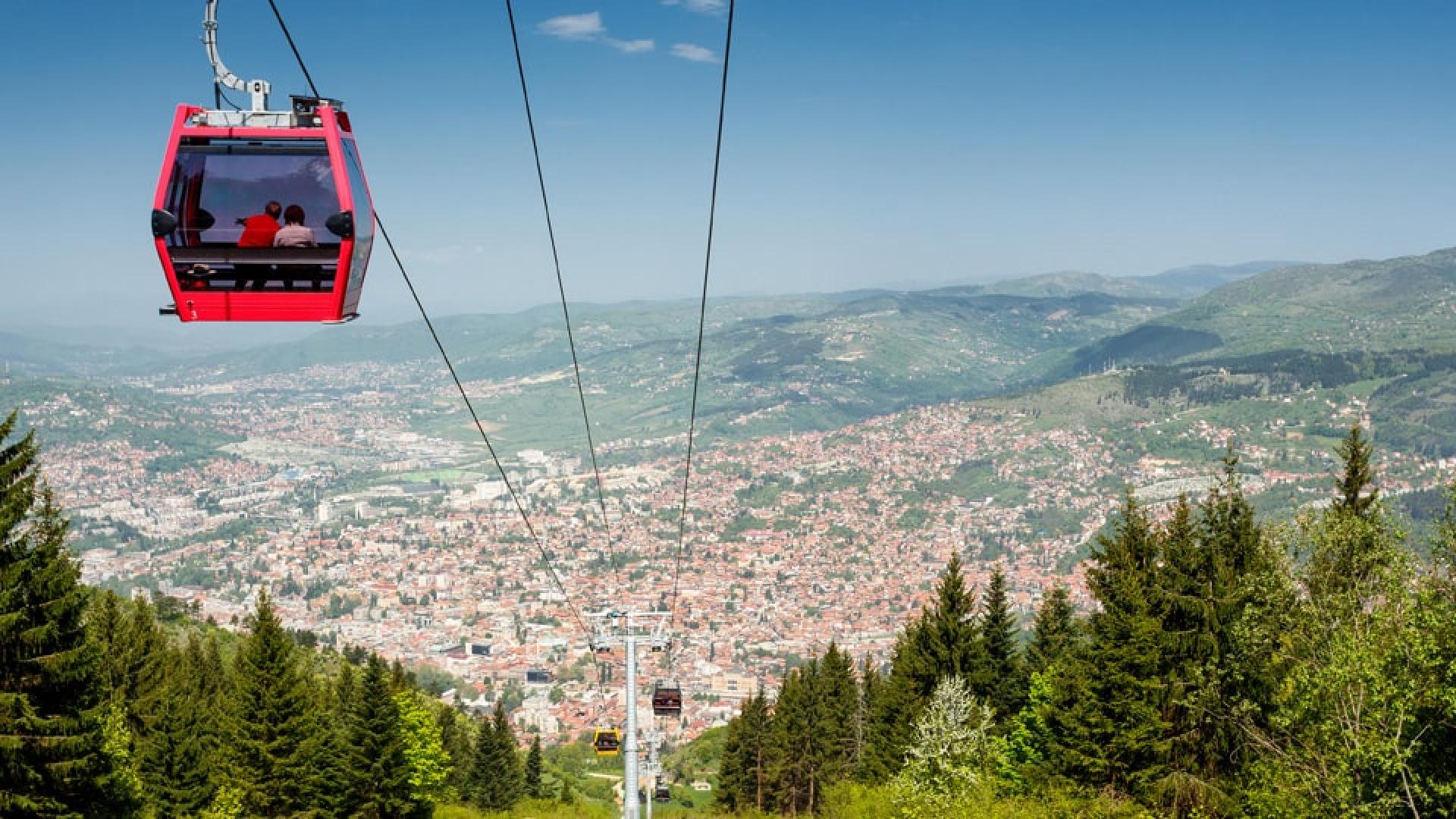
View on the Sarajevo Valley.
The tourist offer includes a mandatory funicular ride (a gift from Austria) to Mount Trebević below the peak at 1,629 meters above sea level with a beautiful view of the city.
A lot of tourists?
ZD: Tourist visits are constantly numerous, the pedestrian zone in the inner city center along the main Titova street is always full of people. The street resembles the Stradun in Dubrovnik, with which we are bound by the medieval charter of the Bosnian Kulin Ban [1] and with which we also share a similar dialect.
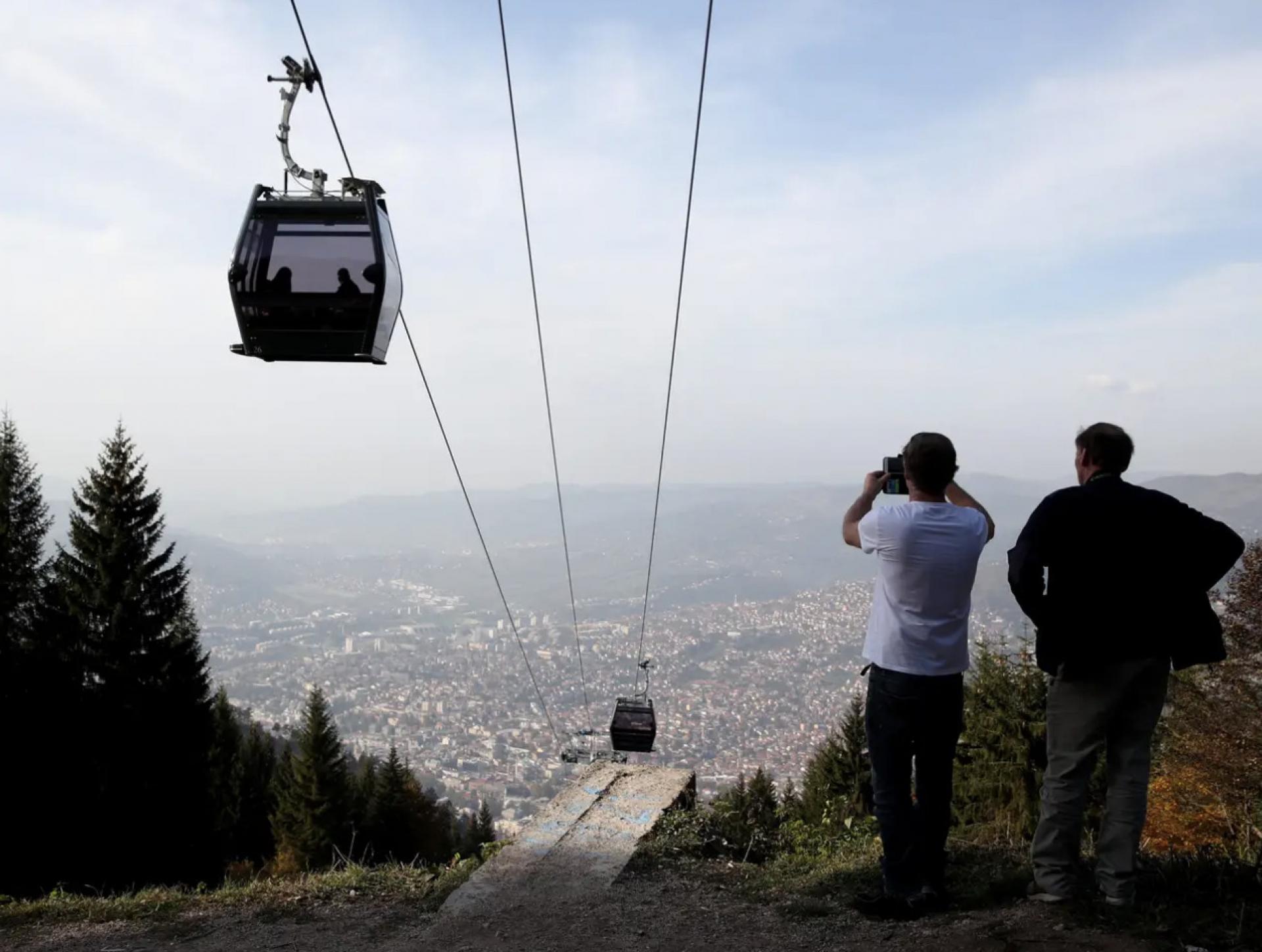
Sarajevo below the Mount Trebević cable car in 2018. | Photo © Tim Goode
Is such a content development interesting for visitors as well as residents?
ZD: Every summer, numerous international visitors are attracted to the famous Sarajevo Film Festival at the National Theatre, when charming Sarajevo hostesses welcome numerous foreign and domestic visitors. Significant cultural activities take place during the regular May Collegium Artisticum exhibition of fine artists, sculptors, painters, architects and urban planners, designers, photographers, graphic artists. from all over Bosnia and Herzegovina, along with annual awards.
What is the contact and influence of the Arab world?
DD: Non-aligned Yugoslav political movement (after TITO's answer Njet to the Informbiro and Stalin) created Yugoslavia’s friendly political and business contacts with numerous countries around the world, starting with the Vatican, Europe, USA, through Islamic and Arab countries all the way to China and Japan. The Yugoslav passport of the time was gladly seen all over the world. It is the same today and it is noticeable that tourists from all over the world, as well as from Islamic countries, feel at home in the narrow streets and shops, kebab shops and cafes of Baščaršija.
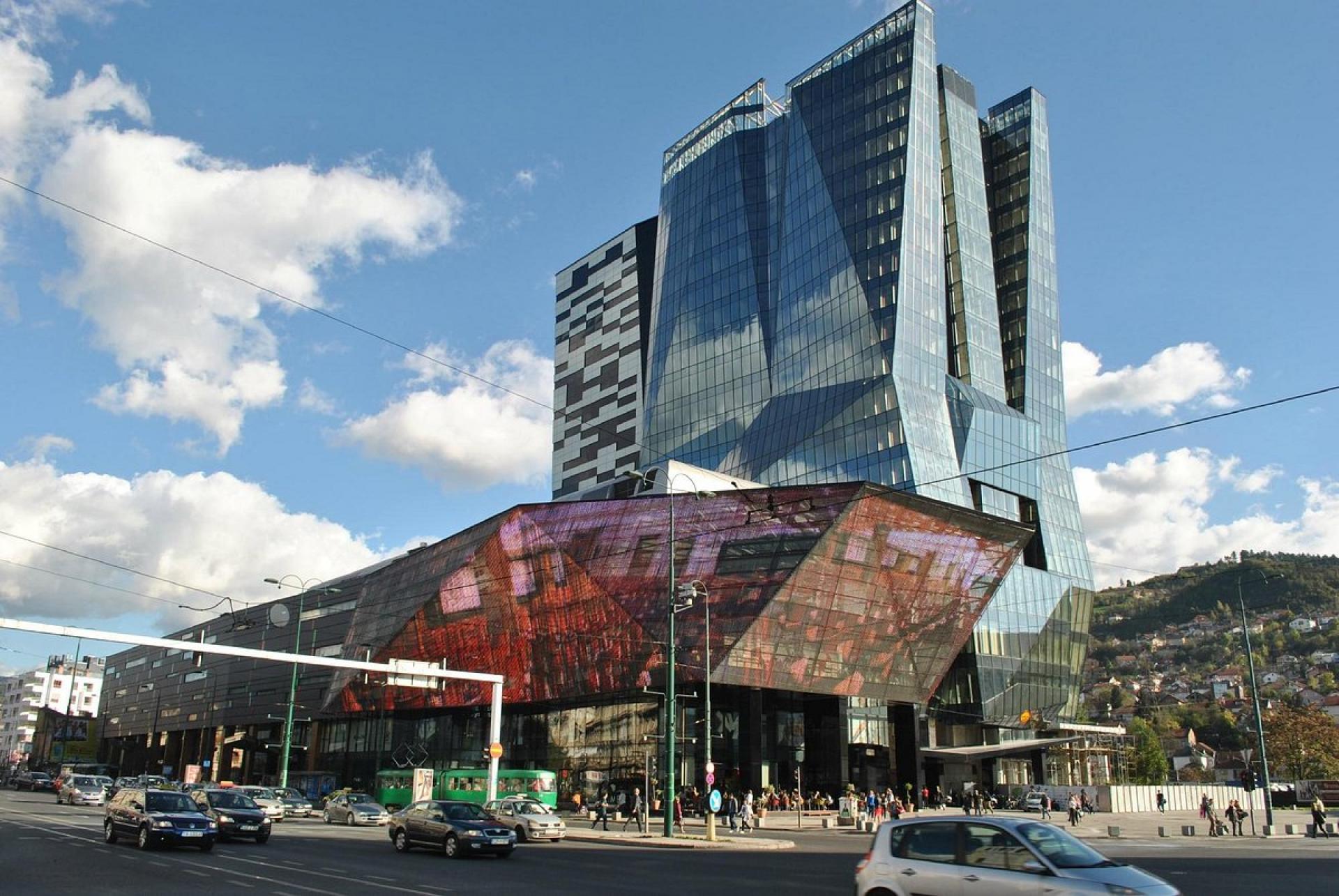
The King Fahd Cultural Center in Sarajevo consists of a mosque, sports and educational centers, and a market. The center’s mosque is currently Bosnia’s biggest with a capacity to accommodate 1,500 people at a time. The center is one of the largest and most important support projects provided by the Saudi Arabia to Bosnia and Herzegovina.
After the war in the 1990s many humanitarian organizations came from those countries, and some of them played the role of religious missionaries. It means convincing people to convert to Islam. Young people joined because the organizations paid monthly, so they agreed just to survive. Another arrival, apart from humanitarian organizations, is the arrival of capital from the East. For example, builders and real estate from abroad came to Illiđa. This can be seen in bilingualism - in our language and in Arabic. Settlements were built for Arab guests outside the city so that they could stay in nature around Ilidža.
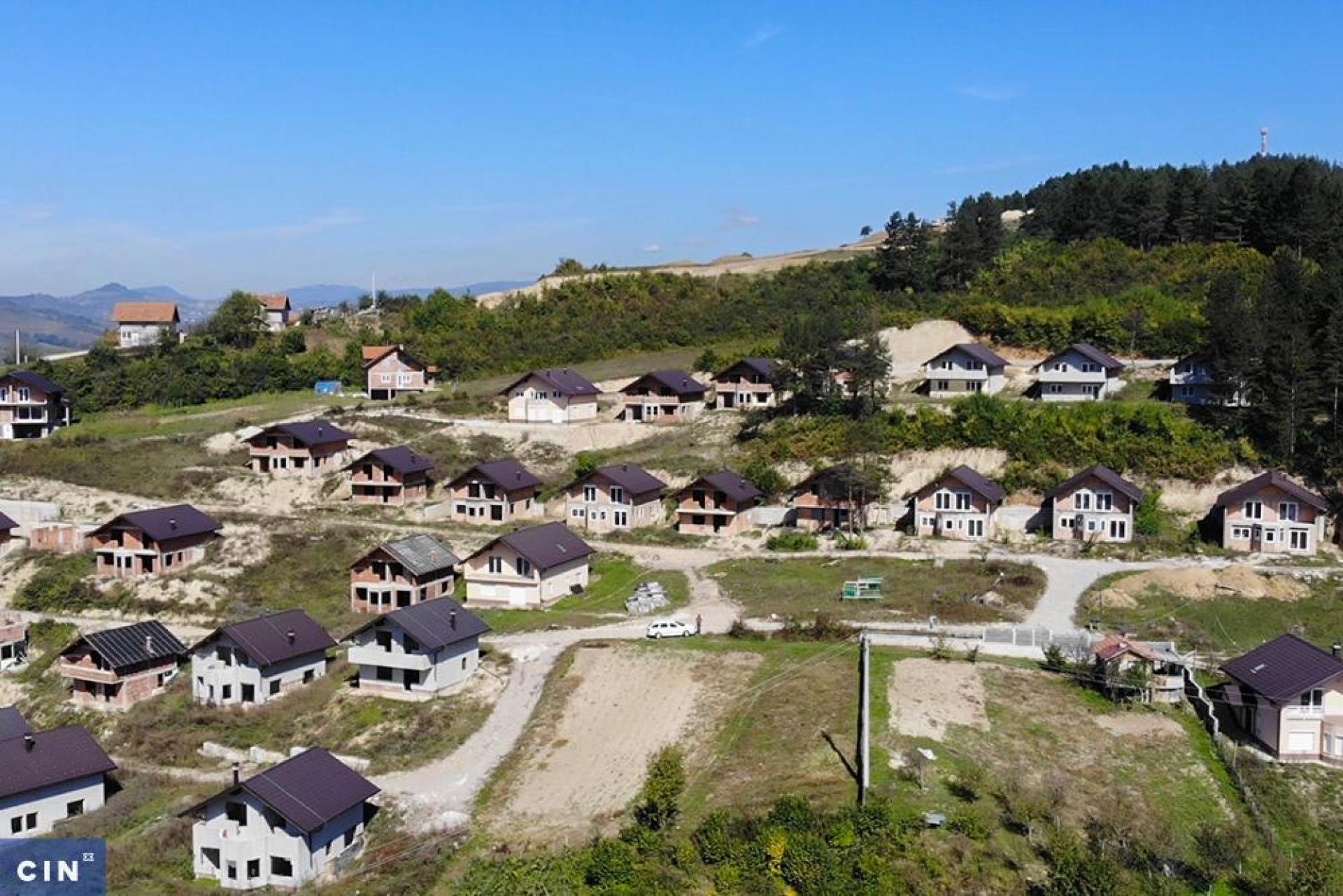
Unfinished Arab Resort near Sarajevo's part lliđa.
Who constructs and designs mosques in Sarajevo?
ZD: According to a legend, the city got its name from Saraj and Ova, the meadow in front of the caravan shelter. After the founding of the city of Sarajevo in the Middle Ages, several significant mosques were built, and later also significant Catholic and Orthodox churches, as well as a smaller number of Jewish and Evangelical temples. It is worth reminding that Jews, after being cruelly expelled from extremely Catholic Spain in the middle of the Middle Ages, were gladly accepted in Sarajevo where they found refuge and built a Synagogue and a Jewish Temple. At that time Sarajevo got the attribute Bosnian Jerusalem.
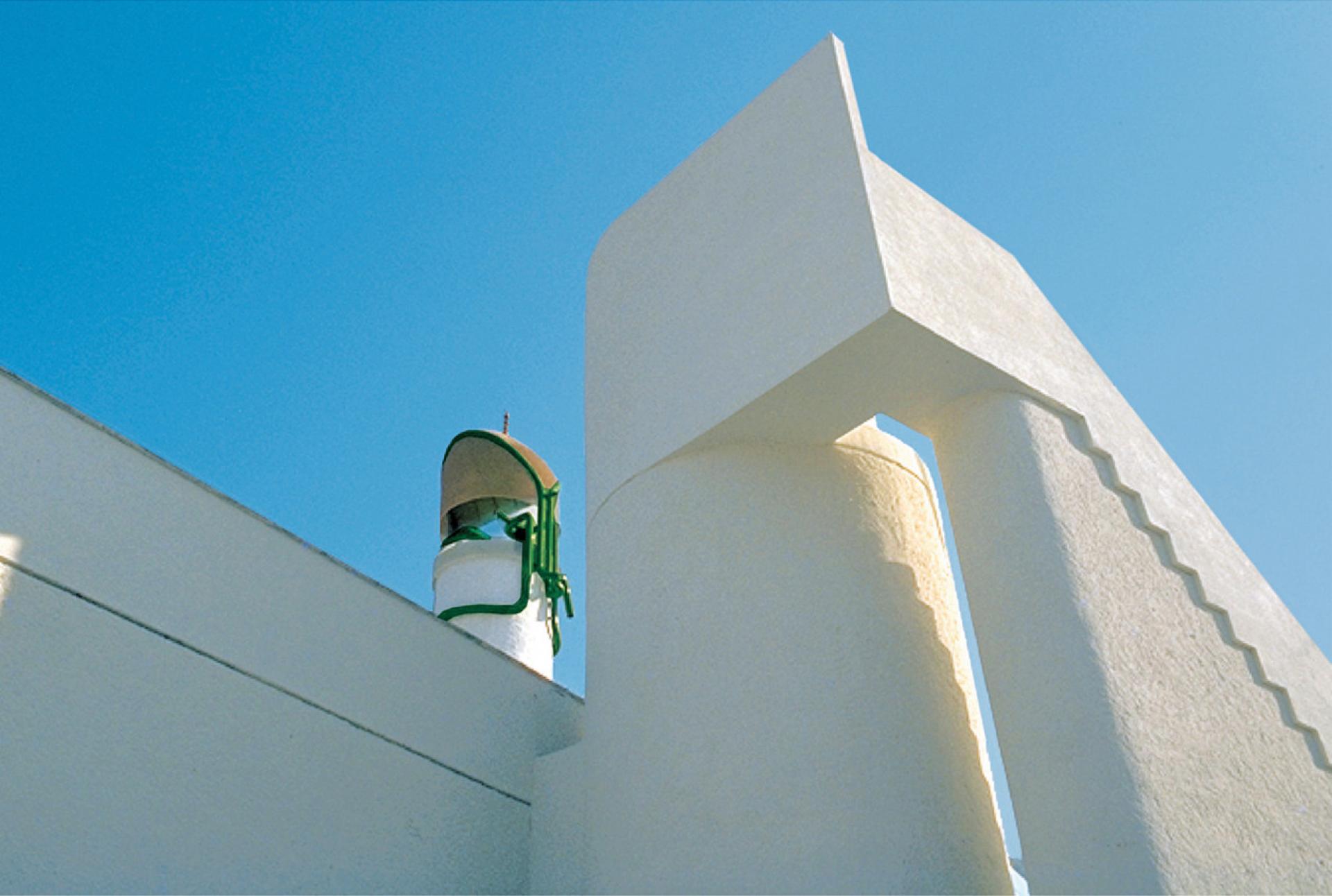
Šerafudin White Mosque by Zlatko Ugljen in Visoko. | Photo © Zlatko Ugljen
Among architects of religious buildings in the era of socialist Yugoslavia it is worth mentioning professor Juraj Neidhardt, who started his first practice in the office of Le Courbusier. Neidhardt won the first prize for the Catholic religious building in 1970, and as a young associate I had the honor of participating in the final presentation in Zagreb. The final project realization was created by assistant professor Džemal Čelić. Notable international success was achieved by professor Zlatko Ugljen with the realized project of the mosque in the town of Visoko for the exceptional realization of which he was awarded the world-renowned Aga Khan Award.
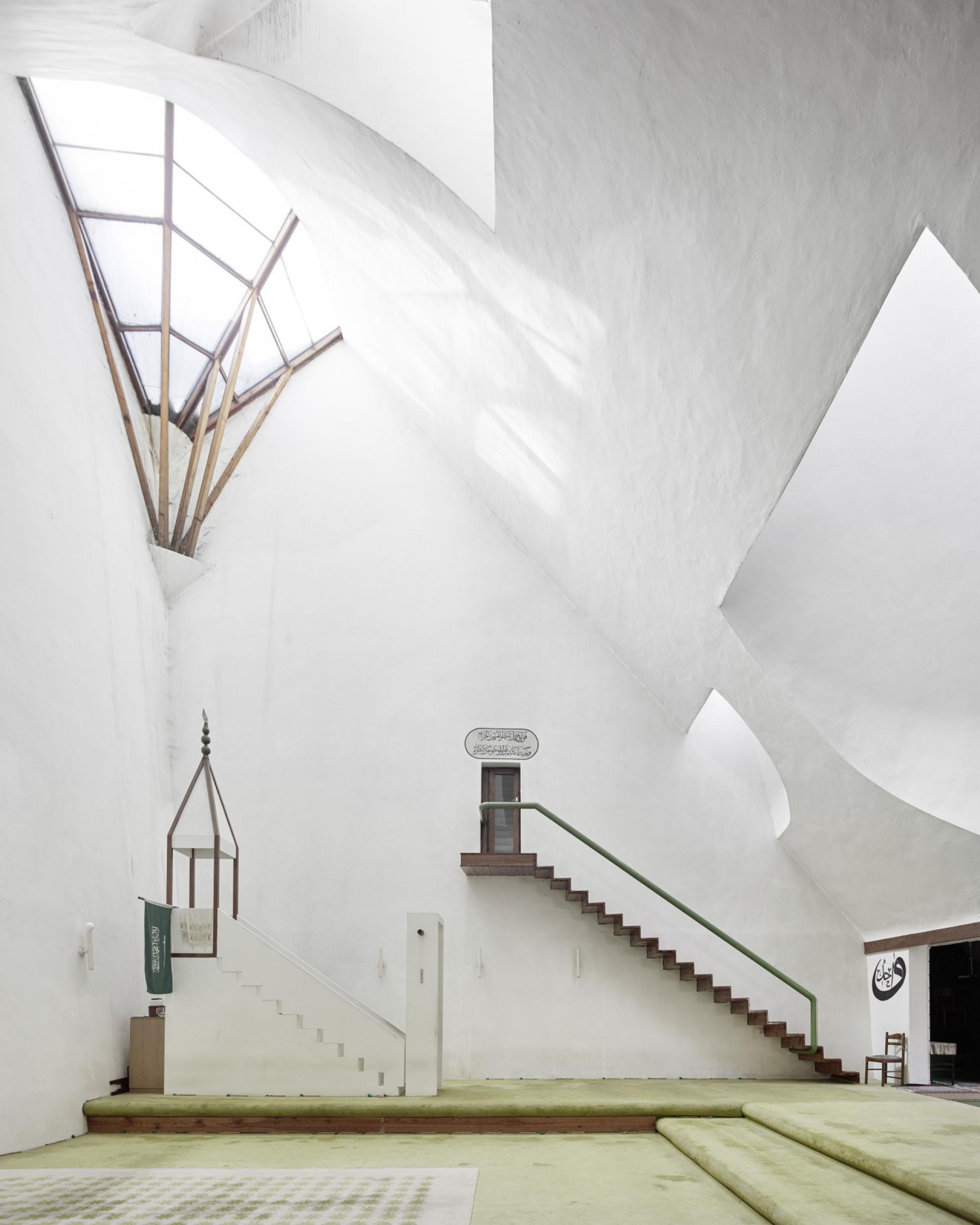
Šerafudin White Mosque by Zlatko Ugljen (1969–79) in Visoko, Bosnia and Herzegovina. | Photo by © Valentin Jeck, commissioned by The Museum of Modern Art, 2016
Awarded was Amir Vuk for the realization of the reconstruction of the small mosque in the traditional wooden style in the mountain village Lukomir under the southern slopes of the mountain Bjelašnica. Notable is also the realization of the local mosque at the end of the 20th century on Koševsko brdo in Sarajevo by the architects Ahmed and Faruk Kapidžić with a kindergarten and a playground for children.
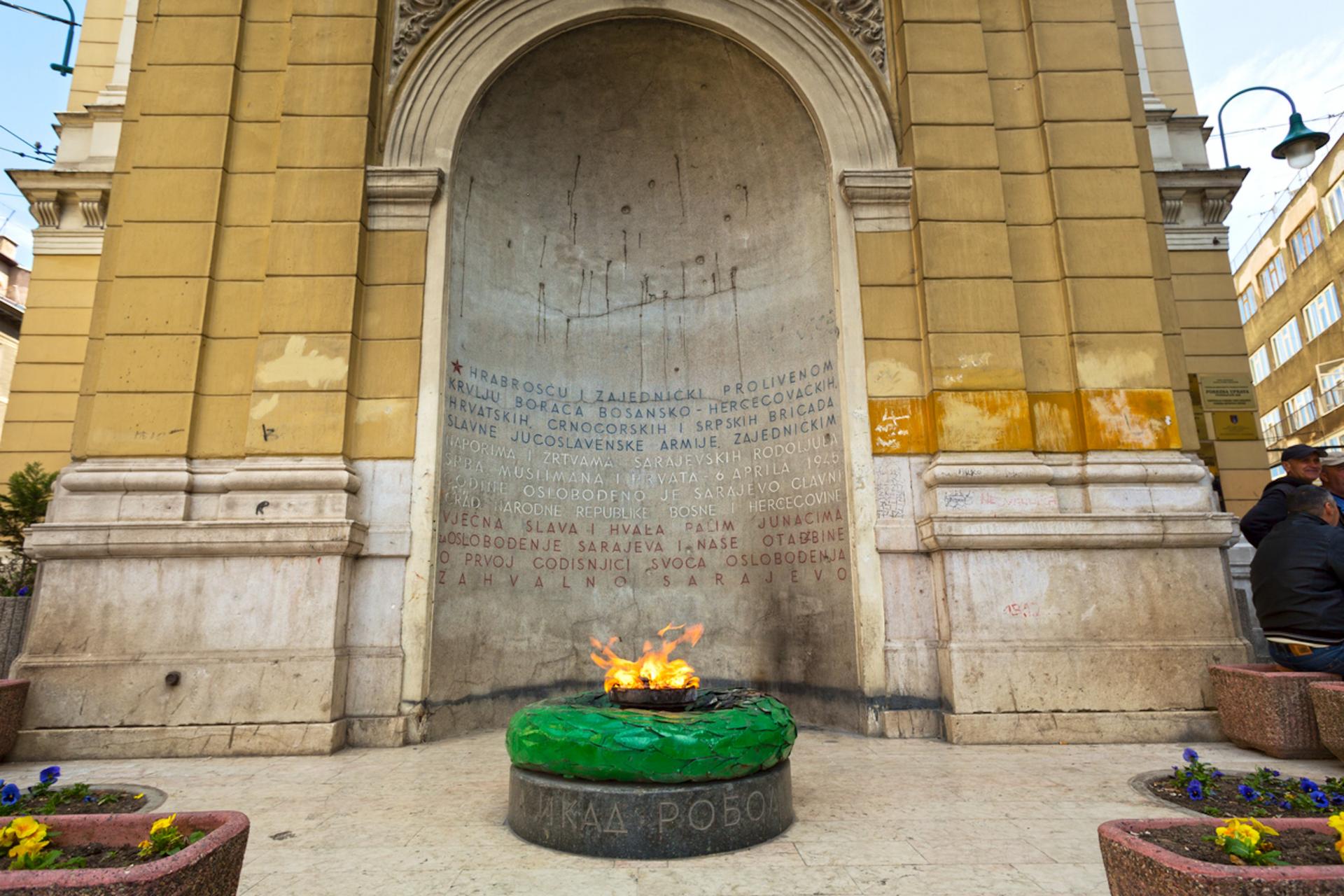
The Eternal Flame memorial designed by Juraj Neidhardt was unveiled on April 6, 1946, marking the first anniversary of Sarajevo's liberation from the occupation of Nazi Germany and the fascist Independent State of Croatia. It stands as a testament to the sacrifices made during the war and serves as a reminder of the city's resilience.
Is this still something to hope for?
DD: Some buildings were reconstructed after Balkan wars in the 1990s thanks to international donations but of course the reconstruction is still going on. Also if the buildings were not damaged there was no glass on the windows so it needed to change damaged windows covered with nylon. The other important fact was the renovation of the roofs.
Do you have the impression that Europe really sees this region here?
DD: It bothers me that we all talk a lot about entering Europe, but we do little for it. Bosnia is a very divided country. As a society, we should adapt our laws to the EU to communicate as a society. We should accept positive things, but I am afraid that for our lives we will not experience them.
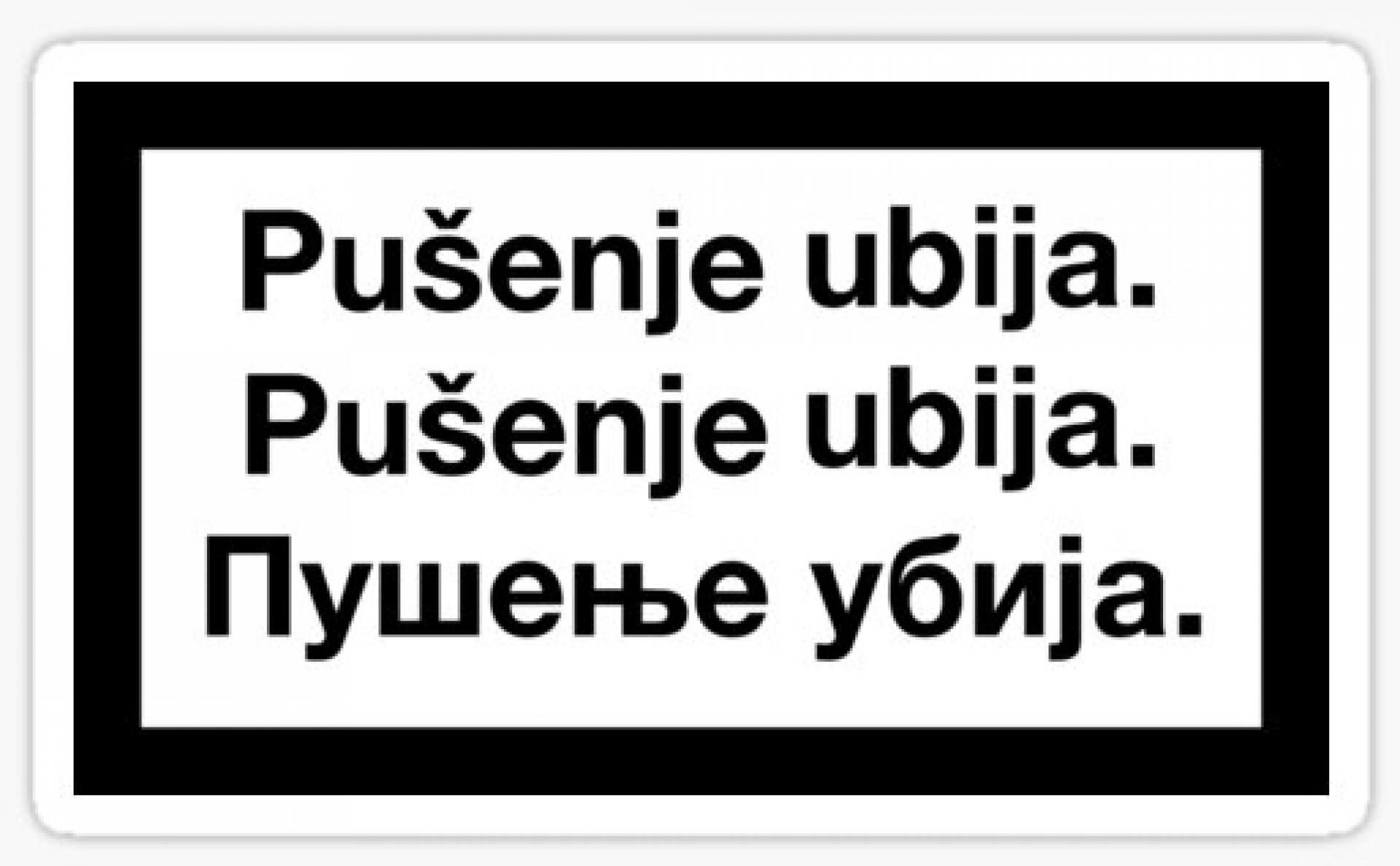
Smoking Kills in Croatian, Bosnian and Serbian- same words just different languages
Is there a future for young people in Bosnia and Herzegovina?
DD: The answer cannot be optimistic. After the tragic secession of ex-Yugoslavia and three and a half years of frenzied shelling of the besieged Sarajevo. After thousands of citizens were killed, of which 1601 children, there are still continuing disturbing political, nationalist and religious discussions.
-
Notes:
[1] As a founder of the first de facto independent Bosnian state, Kulin was and still is highly regarded among Bosnians. Even today Kulin's era is regarded as one of the most prosperous historical eras, not just for Bosnian medieval state and its feudal lords, but for the common people as well, whose lasting memory of those times is kept in Bosnian folklore